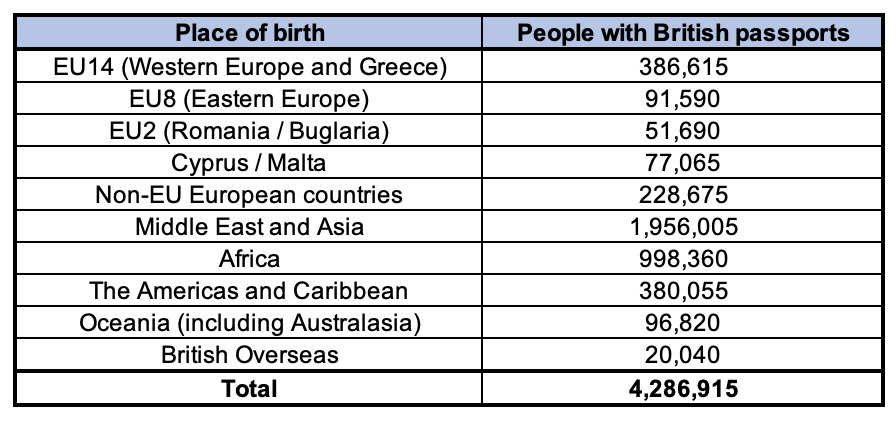
It is incredibly important that the public is given the full picture on immigration – that is especially so now when immigration levels have hit all-time record levels.
There were 1.2 million residence visas granted in the past year to people from all over the world to come and live here – the most ever in a one year in all of British history (according to Home Office figures).
Net migration is now over half a million per annum (compared with approx. 40,000 in the ’90s). The number of non-UK born people here has more than doubled from 4.5 million in 2001 to 10 million now.
Yet there has been an increasing tendency by a number of official organisations in the UK to refer only to overseas nationals, rather than country of birth, in headline bulletins and analyses.
That is why only discussing the nationality of workers provides a partial and incomplete picture of the impact of immigration on the UK.
The ONS has also been guilty of focusing on non-UK nationals in bulletins when discussing employment rates among migrants, leading to a surfeit of discussion in the media which bases many articles on such ONS publications and framing. See example here.
This point was underlined by the recently-released Census data which revealed that more than 4 million people who have British passports in England and Wales were born overseas (Table 1 below).
That is why it is vital for any organisation to include data on people by country of birth when discussing the impact of immigration, including for instance when it comes to those working in different sectors of the economy such as hospitality and the NHS.
Another way to illustrate this point is to look at the significant difference between employment by nationality and employment by country of birth.
Although there were 6.2 million non-UK born people employed in the UK in July-September 2022, the number of non-British nationals was only around 4 million (ONS labour force survey – see source). That’s a difference of 2.2 million people.
The table below shows that the largest bloc of people in England and Wales as at March 2021 with British passports who were born overseas was the nearly two million people UK citizens from the Middle East and Asia, followed by nearly a million naturalised British nationals originally from Africa.
Table 1: Overseas-born people in England and Wales with British passports. Census data on characteristics of international migrants, as at March 2021 (ONS – see source).

